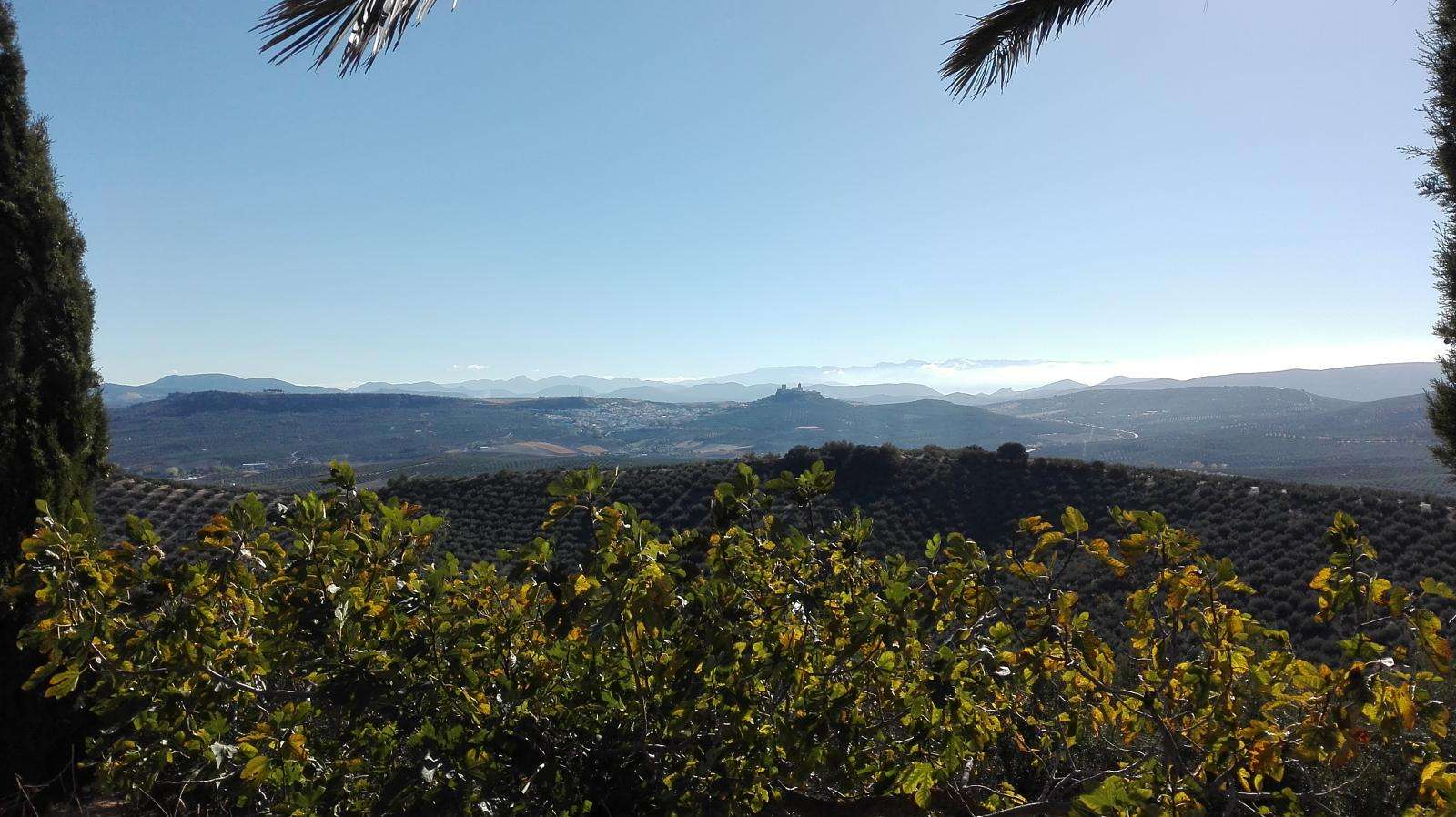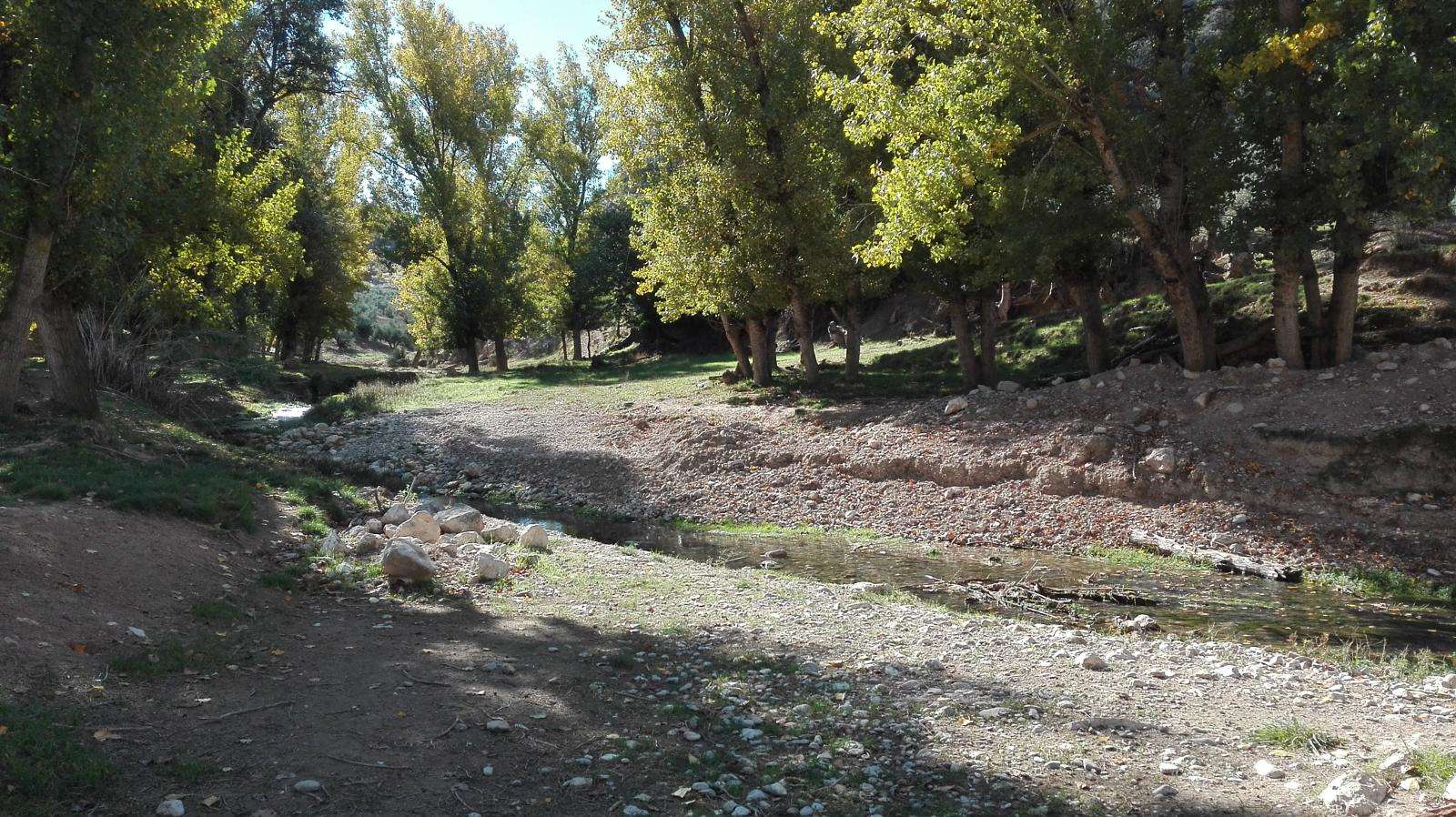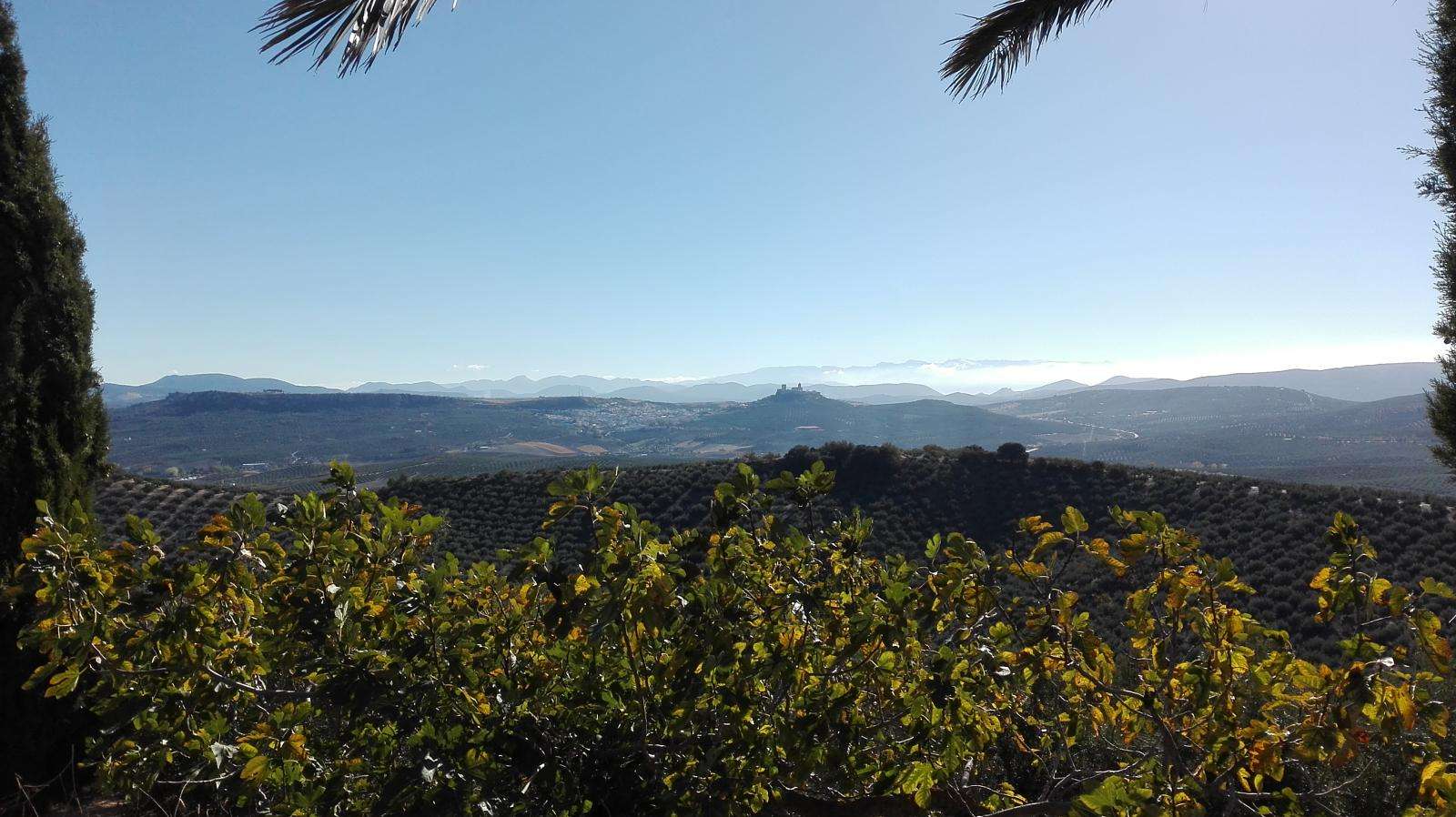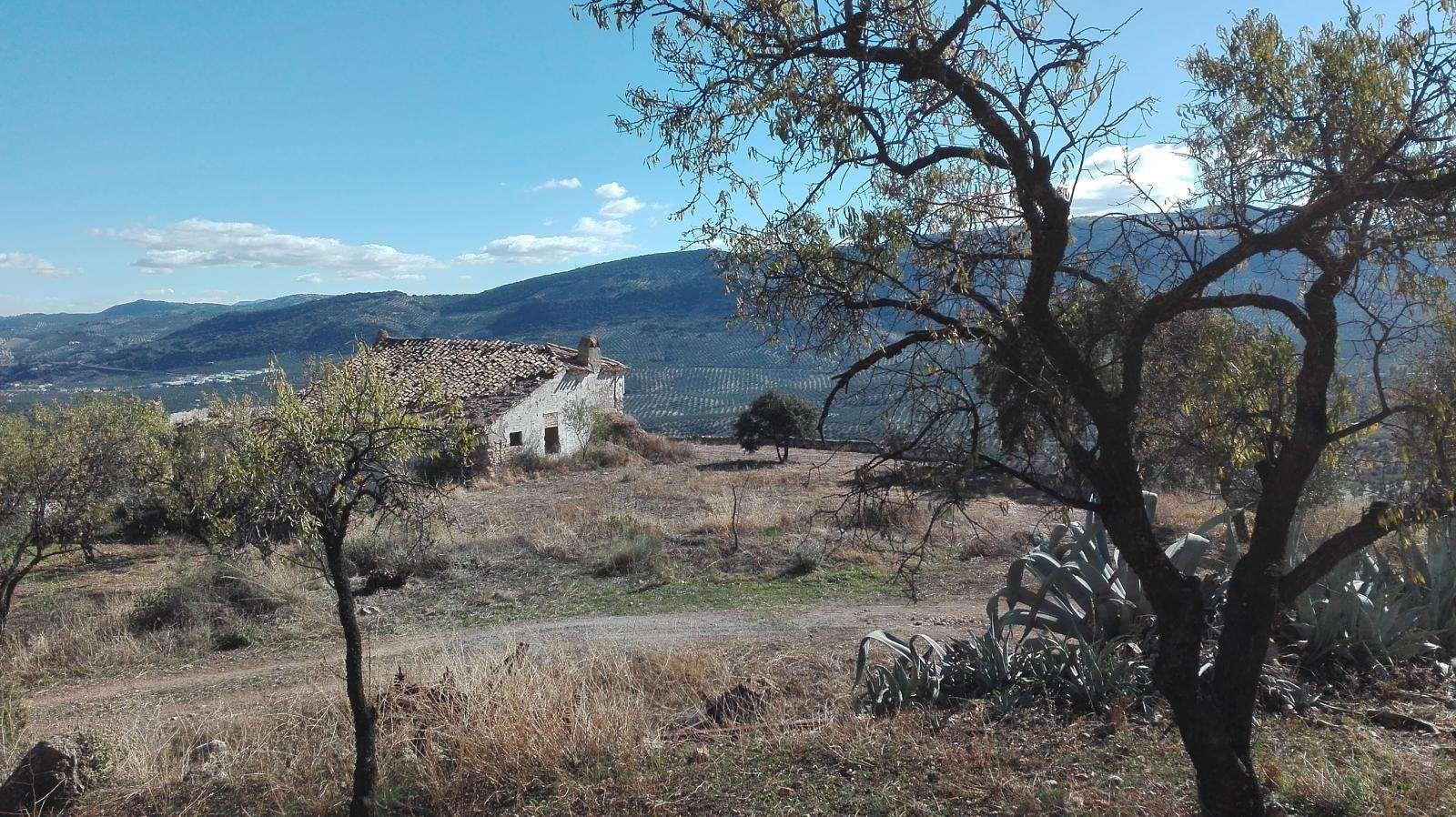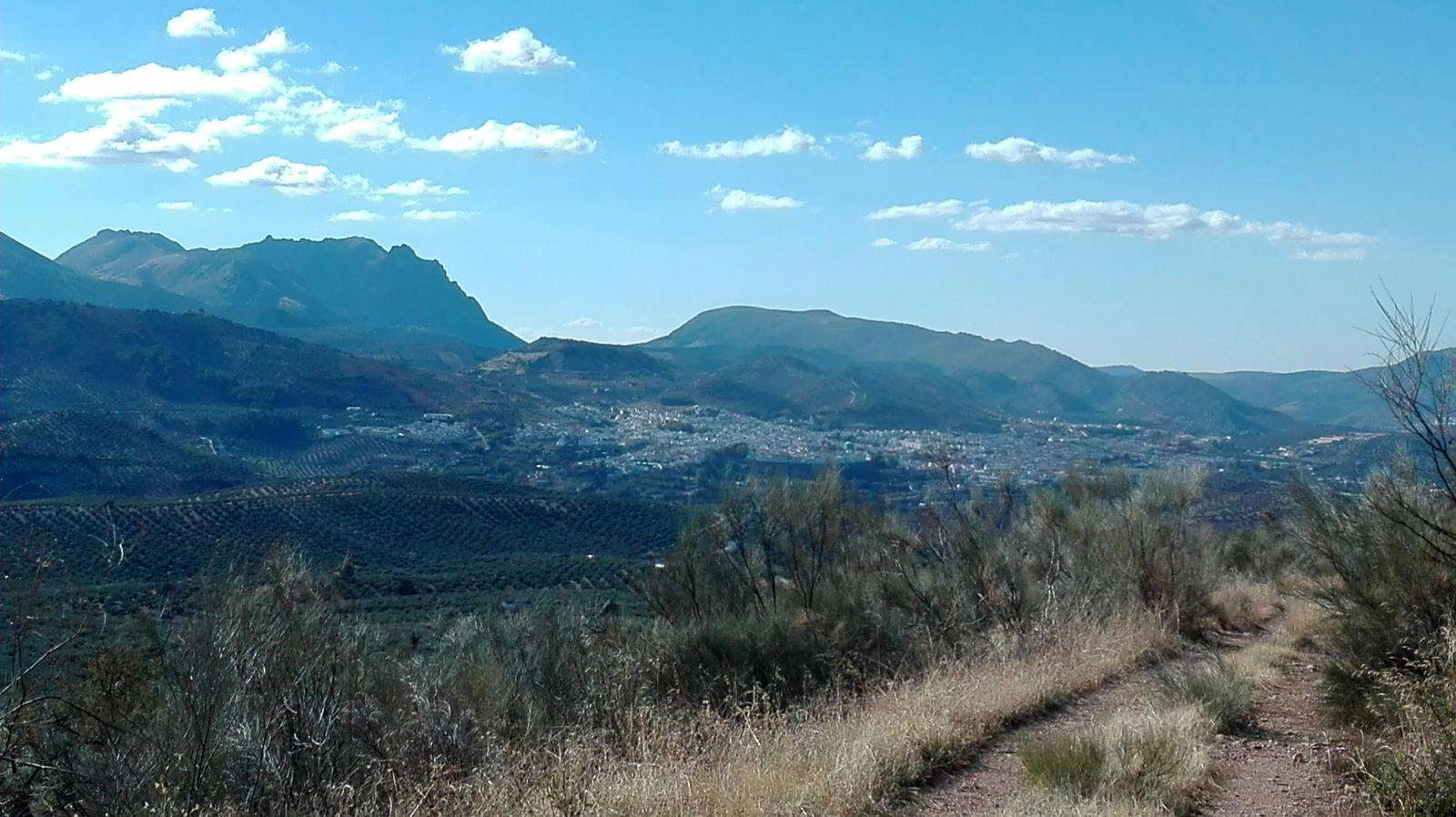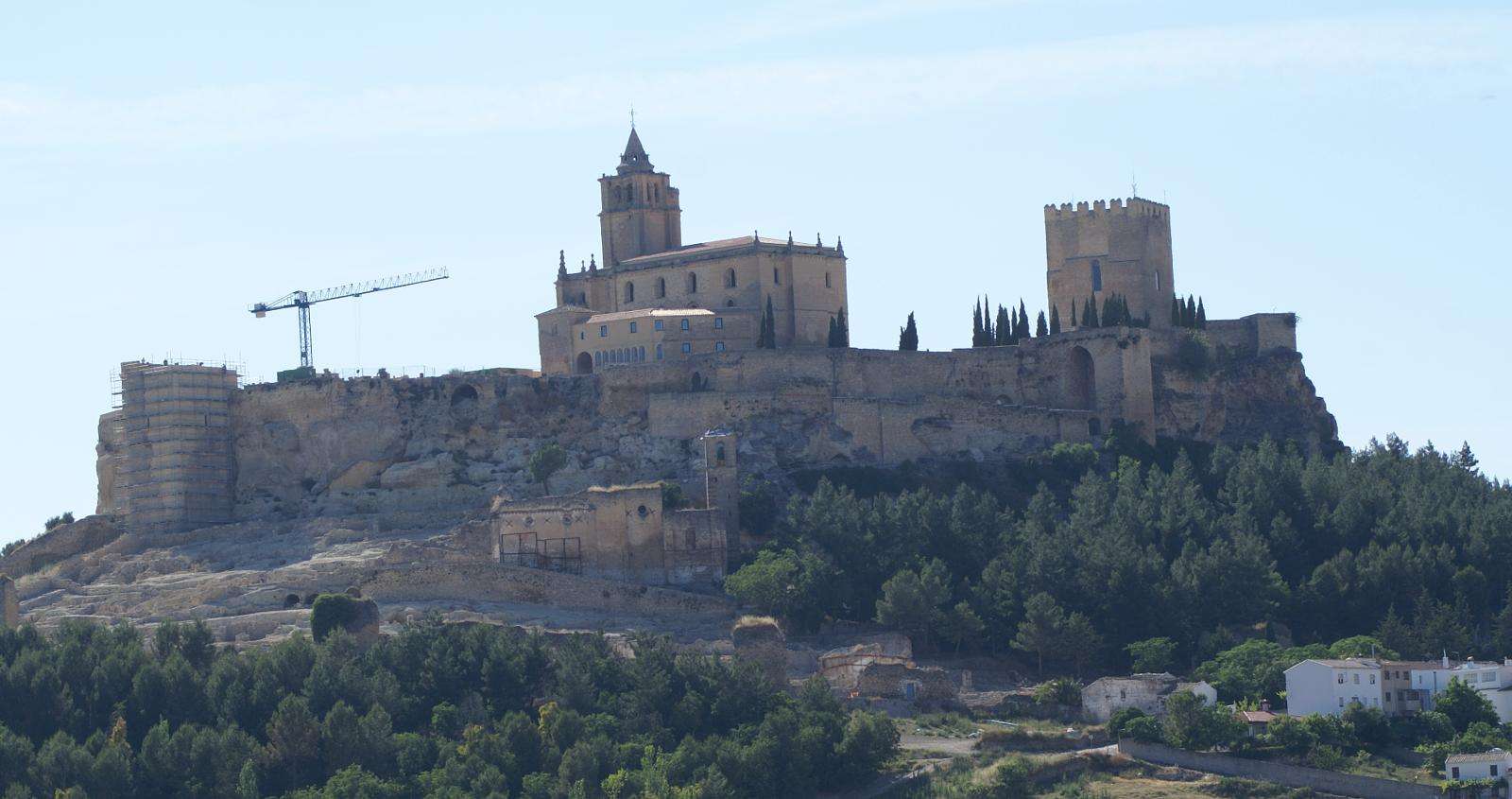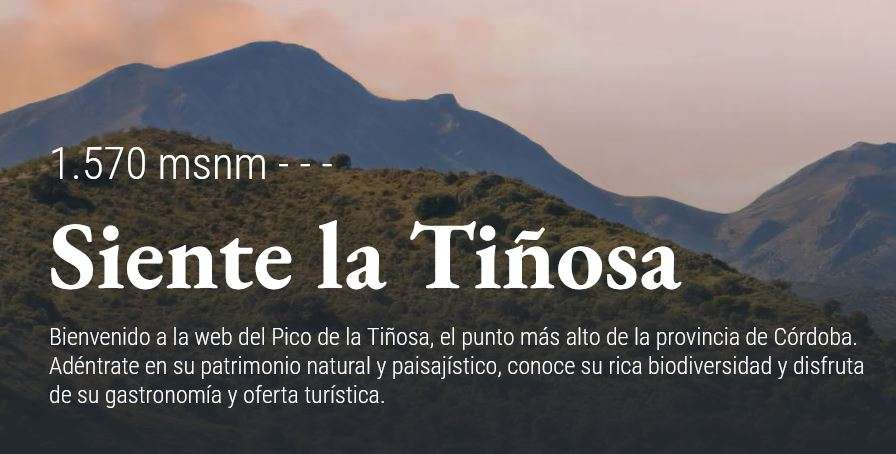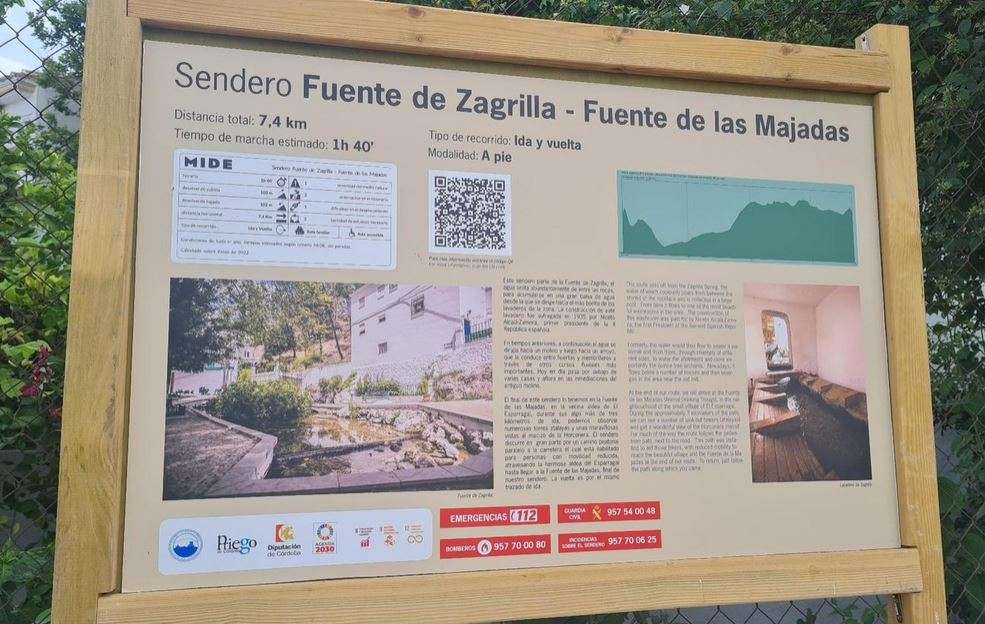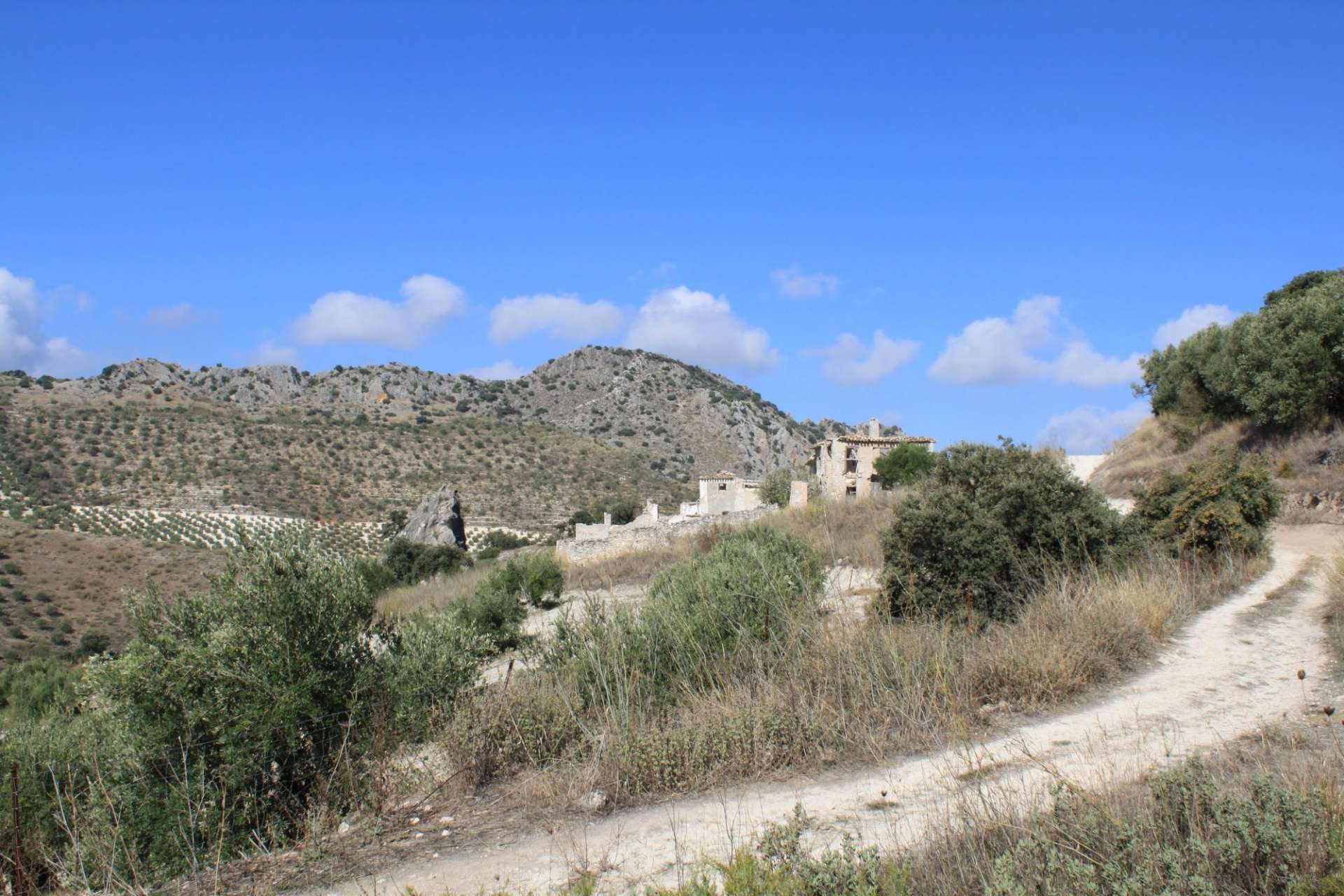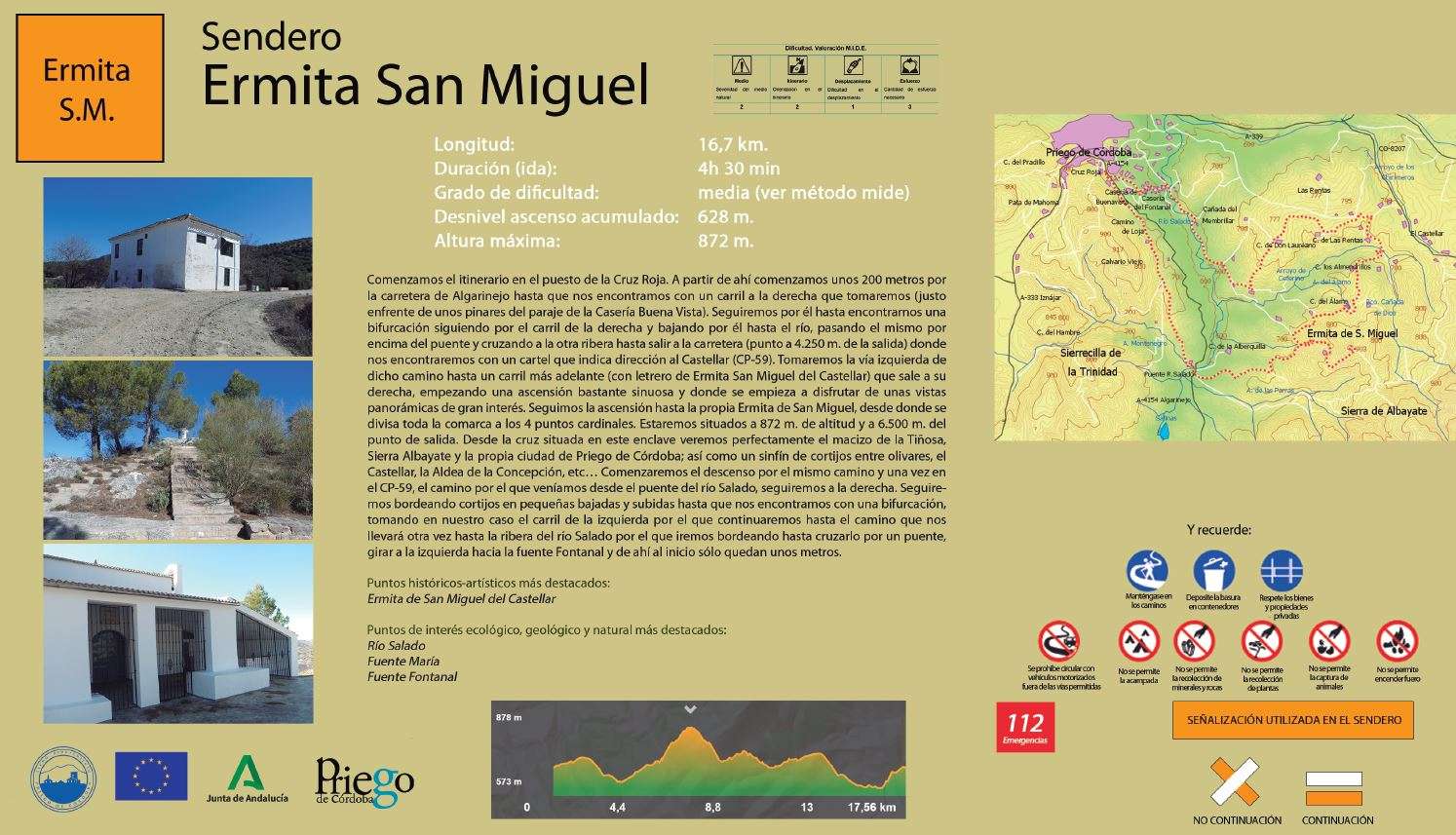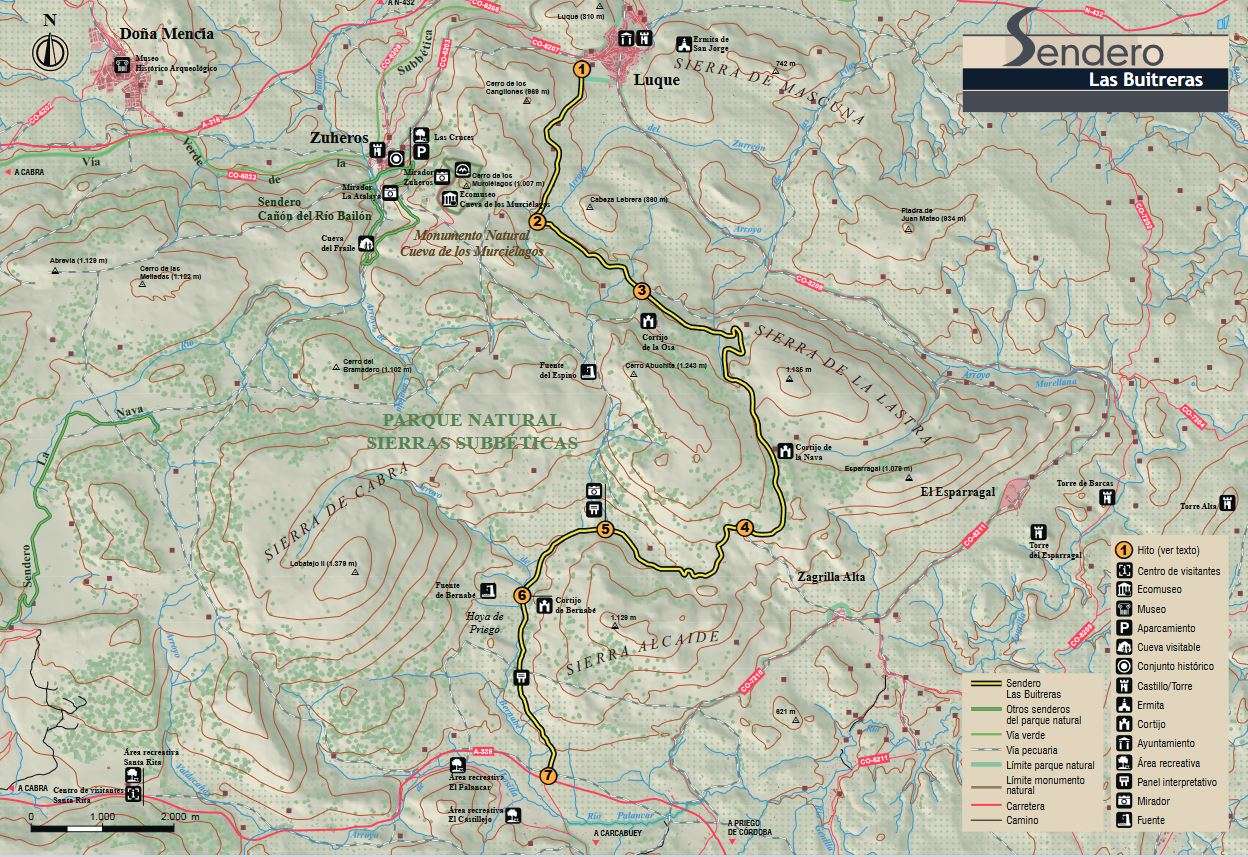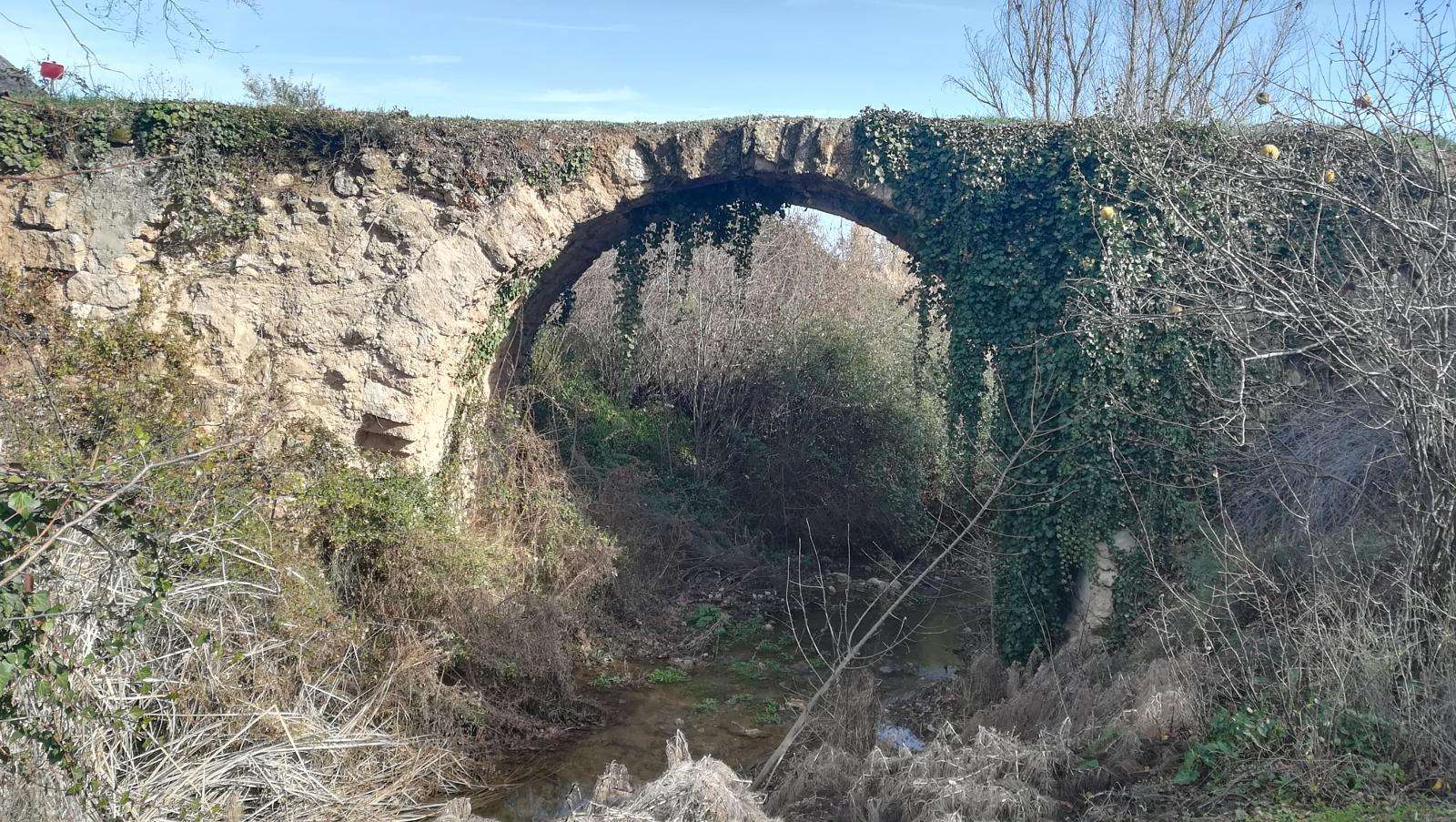The trail starts in Alcalá la Real from the Camino Nuevo. From here, the route heads towards the dispersed area of Puertollano along the known path of Cruz de la Mata, following the old route of the cordel de Córdoba – Guadix. When reaching Puertollano, caution should be exercised on a small stretch that runs along the road (JV-2238) and coincides with the cordel de Alcaudete – Granada. Once in Puertollano, we will cross the Córdoba-Granada road (N-432) via an elevated crossing and immediately after, head towards Cruz de la Jurada in a constant and beautiful ascent among olive trees, using an old path that, in its final part, is paved. Once at Cruz de la Jurada, you can enjoy unbeatable views of Alcalá la Real and Castillo de la Mota, whose silhouette is outlined on the horizon with Sierra Nevada as a backdrop. From Cruz de la Jurada, we will descend a long stretch on an asphalted lane to the known barranco de la Muriana, and from there, we will take a dirt road that will lead us to the vicinity of Fuente Álamo, bordering the first foothills of Cerro de las Albarizas. After crossing Fuente Álamo, we will head towards the village of Sileras, now within the municipal area of Almedinilla, on a stretch where we will coincide with the cordel de la Divisoria and later with the colada del Camino de las Chozas, through which we will reach this village. Once in Sileras, we will take an asphalted lane to go to Carrasca following the route of the colada del Camino de la Renta, also called Ríos. From Carrasca, our path will run on land and parallel to the Almedinilla River, which we will eventually cross in a place of great beauty where the poplars form a beautiful gallery forest. From the Almedinilla River, we will enter the municipal area of Priego de Córdoba and ascend to the village of El Poleo, whose beautiful ensemble of houses and intricate alleys will lead us to an old, less-traveled path, and sometimes transformed into a trail that will take us to the village of Concepción. In this stretch, we can enjoy magnificent views of the urban area of Priego de Córdoba with Tiñosa in the background, the highest point in the province of Córdoba (1,570 m), in the background. From Concepción, we will descend to Priego de Córdoba along the colada del camino de la Concepción until intersecting with the Priego – Alcalá la Real road (A-339), which we will cross coinciding with the route of the colada de Priego – Almedinilla at the known Puerta de Granada. To reach the urban area of Priego, we will take a path that ascends near Balcón del Adarve until reaching Calle Velero in Paseo de Colombia, an unbeatable ending with views and an environment that do justice to the beauty of this municipality.
DESCRIPTION OF THE NATURAL ENVIRONMENT
The olive groves in Andalusia can be understood, not as an aggressive agricultural environment towards other forms of life, but as a semi-natural environment with a necessary and close relationship with both the flora and fauna that surround it. In this sense, for nature lovers, it can indeed be admired for what it is, the largest artificial forest in the world.
Thus, for proper enjoyment and observation of this environment, there is no better location than this, at the confluence of the two provinces with the highest density of this species on the entire planet, Córdoba and Jaén. These undulating terrains sometimes present slopes with high inclines from which we can delight in the harmonious monotony of the landscape, disrupted in a masterful way by castles, such as La Mota, or whitewashed buildings that serve as a resting place, not only for the sight but also for the laborers who work here.
On our journey, we will come across sources channeling springs, such as Fuente Álamo or Sileras, which have fostered the formation of small population centers around them and speak to the carbonate nature of the rocks beneath our feet, beyond the clays and marls that we appreciate at first glance.
Among all natural environments related to water, the Almadinilla River, also known as Caicena, is undoubtedly the most prominent. Around it, an interesting poplar grove develops, and in certain stretches, it still forms riparian woods and gallery forests. Additionally, we observe areas with significant gypsum outcrops, indicating the presence of some of the oldest materials in the Subbetic.
The end of the route, from the village of Poleo onwards, awakens all our senses to the Natural Park of the Subbetic Mountains. The sight scans the horizon until reaching La Tiñosa, the highest point in the province of Córdoba; hearing begins to identify more frequently the characteristic songs of warblers and greenfinches; the sense of smell appreciates the fragrance of honeysuckle; taste sweetens with wild blackberries, and even touch clearly identifies the rough hardness of the limestone rocks found in the Sierra de los Judíos or forming the travertines of Balcón del Adarve, at our point of arrival.
ATTENTION. HIGHLIGHTS
The stretch between the villages of El Poleo and La Concepción, within the municipality of Priego de Córdoba, combines the charm of a less-traveled traditional path on the slopes of the Sierra de los Judíos with the vegetation of the Mediterranean mountain and the magnificent views that can be seen from here. However, of all these, the most spectacular and surprising is the appearance, as we progress in our walk, of the urban center of Priego, perched on the Balcón del Adarve and with the Massif de la Horconera behind.
CAUTION.
In this stage, the main danger for users is crossing asphalted lanes, where our route coincides with road traffic. In these cases, it is always recommended to travel on the left side of the road, wearing light-colored clothing, using some type of reflective or luminous element, and avoiding passage through these sections from dusk to dawn. On the other hand, part of the path of the Sierra de los Judíos will be lost. Since it is a short distance, it will be sufficient to follow the edge of the mountain to recover it.
BASIC DATA ALCALÁ LA REAL
Location of the municipality: Alcalá la Real is the main municipality of the Sierra Sur de Jaén region, located in the southwestern end of this province, bordering the municipalities of Almedinilla and Priego de Córdoba, in Córdoba; Íllora, Moclín, Montefrío, and Montillana, in Granada; and Alcaudete, Castillo de Locubín, Frailes, and Vadepeñas de Jaén, in the province of Jaén.
Average altitude of the main population nucleus: 930 meters above sea level (msnm)
Coordinates of the town hall: 37.459525, -3.924561 Surface area: 261.2 km²
Number of nuclei composing the municipality: 22
Population in 2016: 21,758
Climatic data: We are in a continental Mediterranean climate with an average annual temperature ranging from 13 to 15°C and an average annual precipitation that varies between 600 and 800 mm.
BASIC DATA PRIEGO DE CÓRDOBA
Location of the municipality: Priego de Córdoba belongs to the Subbética Cordobesa region, and part of its municipal area is within the Natural Park of the Sierras Subbéticas Cordobesas. It borders the municipalities of Almedinilla, Carcabuey, Fuente Tójar, Iznájar, Luque, and Rute, within the province of Córdoba, as well as with Algarinejo and Montefrío in Granada and Alcalá la Real and Alcaudete in Jaén.
Average altitude of the main population nucleus: 645 meters above sea level (msnm)
Coordinates of the town hall: 37.438866, -4.202767 Surface area: 288.1 km²
Number of nuclei composing the municipality: 14
Population in 2016: 22,855
Climatic data: We are in a continental Mediterranean climate with an average annual temperature of around 15°C and an average annual precipitation ranging between 600 and 900 mm recorded around the Pico Tiñosa.







